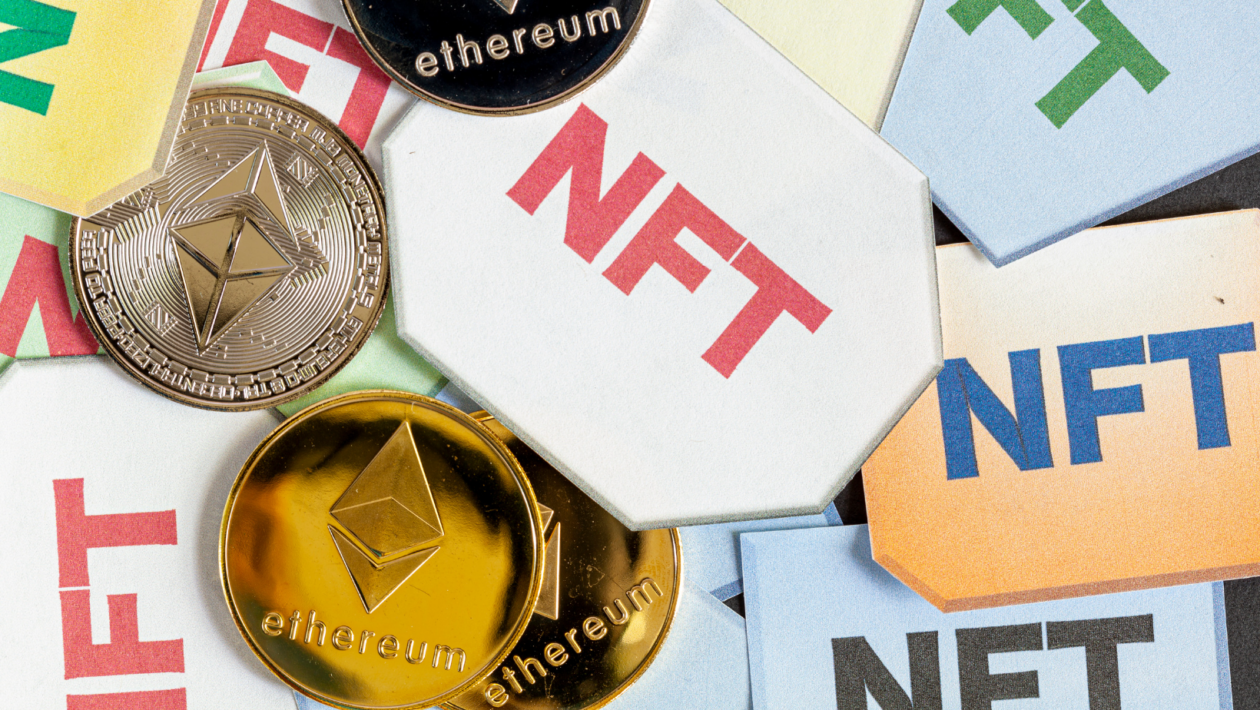From marquee NFT drops selling out on Instagram to major film festivals selling VIP passes as NFTs, 2023 is proving the staying power of these new digital assets. The NFT frenzy in 2021, in which Bored Apes were snapped up for millions of dollars, brought this digital asset class into the mainstream. Looking beyond pure financial speculation, NFT use cases span a number of industries and real-life applications.
Early signs of optimism in 2023 — like OpenSea processing over US$320 million in Ethereum NFT trades by late January — point to a new opportunity for leaders in the space to build better infrastructure to support these digital assets and pave the way for increased utility and adoption.
Market recovery is leading to renewed interest
Crypto Winter has put the non-fungible token space to the test, but in 2023 the sector is starting to show some signs of life. A report from DappRadar estimates that Ethereum’s NFT market is up 68% from its November lows. The steady climb over the past few months will likely help drive projects and creators back to the NFT marketplace as they look to ride the bullish trend.
In an adjacent space, Web3 gaming has had an incredibly strong start in 2023. Investment in blockchain gaming and metaverse projects has reached US$156M, with venture capitalists all in on the sector’s long-term potential. This promising development will carry over to the NFT market, as both Web3 gaming and the metaverse extensively use NFTs to enhance user experience.
Furthermore, prominent companies and household name brands are increasingly dabbling in NFTs. For example, Starbucks is leaning into NFTs to connect with customers on a deeper level, with the recently launched Odyssey program offering games and virtual exploration of coffee farms. With this kind of mainstream exposure, one can expect that NFTs will continue to intrigue both corporate entities and consumers alike.
Where are NFTs headed next?
The underlying technology of NFTs will be a pivotal tool across a number of industries. NFTs can also be used to track goods as they move throughout the supply chain, offering a verifiable record and reducing the risk of fraud and counterfeiting. Moreover, NFT use cases are already being explored in real estate — providing digital, verifiable and immutable records of ownership.
In gaming, NFTs are already providing tradeable ownership of in-game assets, while in the metaverse, users will be able to buy NFTs linked to real-world items. By 2027, the in-game NFTs space is projected to grow into a US$15 billion market.
An array of clothing brands are now employing NFTs to create exclusive, interactive experiences for their customers. A host of luxury labels, including Gucci, Louis Vuitton and Givenchy, are embracing the metaverse and offer digital twins through NFTs. To date, fashion NFTs have sold for a whopping US$245 million.
In the future, NFTs will also transform the way business in other sectors is conducted. The US$1.1 trillion-dollar concert ticketing industry, for example, is seeking new ways to ensure fans have legitimate access to events, and blockchain technology offers a transparent marketplace where tickets can be distributed as NFTs. Additionally, NFTs’ proof-of-ownership capability could end fraudulent ticket sales for good.
NFTs also create new revenue streams for artists and creators looking to foster a relationship with fans. Beyond real-life concerts and galleries, those participating in the creator economy can showcase their work on popular NFT marketplaces and notify their community members each time there is a drop. In this way, creators can connect with new audiences and distribute limited-edition collectibles.
The nuts and bolts of NFT technology itself are also evolving. While still in the early stages, NFTs are being used to represent digital identity, enabling users to prove who they are in Web3. First illustrated in a whitepaper co-authored by Vitalik Buterin last year, soulbound tokens (SBTs) are a new, non-transferable NFT asset class that can serve as a Web3 user identity. In addition to decentralized identities, SBT use cases span across decentralized finance (DeFi), gaming, community engagement and user authentication.
Reducing user experience friction
While the use cases are seemingly endless, there is much work to be done to make NFTs accessible to crypto novices. Users still have to go through a number of tedious steps in order to make an NFT purchase. Aside from the less-than-ideal purchasing process, high gas fees also significantly hinder mass adoption.
The main priority for NFT leaders to prepare ahead of the next bull market should be to implement solutions that save end-users time, effort and money. This includes accepting a wide variety of payment options, including local payment methods as well as credit cards and services like Apple Pay. Additionally, users should never have to take the fall for fraudulent transactions.
Introducing more people to the potential of NFTs requires the industry to establish seamless processes. While mass adoption won’t happen overnight, polishing the customer journey is a huge step toward making this space more accessible. In the not-too-distant future, users should be able to plug in their credit card numbers at one secure checkout to make their purchases with ease.
The future of what NFTs will look like for everyday people is still taking shape, but with the entry of iconic brands and sizable investments pouring into the space, it’s certain that NFTs are here to stay.

